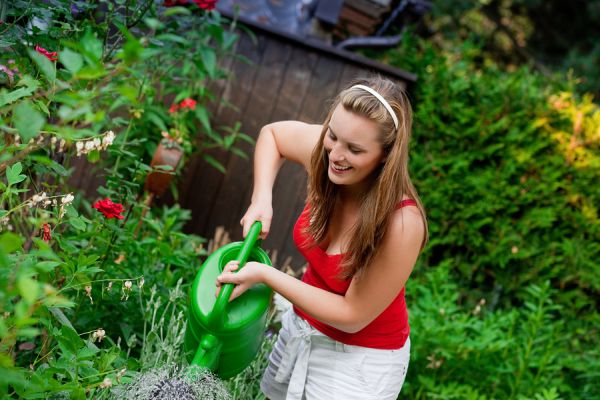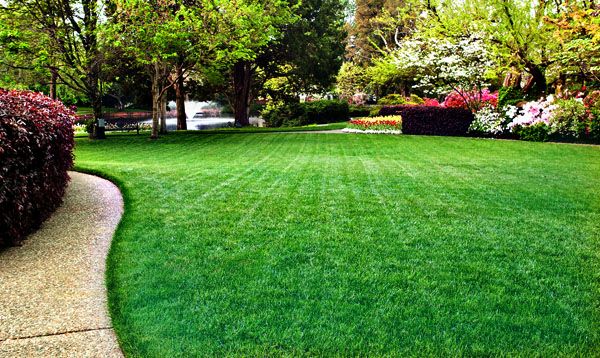While it is clear that we are that humans are endangering many animal species around the world, we usually know only half the story. A huge part of both our planet’s area and its flora and fauna lies in the water. Furthermore, owing to the fact that we have explored only a tiny fraction of this area, we don’t usually know of our impact on it. However, the little that we know has shown that here the impact of is even worse than on land. Activities like fishing are posing dangerous threats to marine animals. It might be the wake-up call now. If we don’t start fishing sustainably now, we might as well give up fishing altogether.
With rising concern about the environment, every activity is now being conducted in a green manner, including fishing. Some methods of fishing are dangerous and harmful to fishes, leading to unnecessary deaths. Sustainable fishing methods help to preserve fish species for future generations, or else we would be handing them a legacy of a world which has very few fish species left. If you are a passionate angler, here are some tips for fishing sustainably that you can follow:
Tips for fishing sustainably
1. Using eco-friendly fishing boats
 Fishing boats use a lot of fuel which emits greenhouse gases too. New engines are available in the market which burns much less fuel. Green technology has allowed fishing boats to be much friendlier than before, which you can use when you go out fishing.
Fishing boats use a lot of fuel which emits greenhouse gases too. New engines are available in the market which burns much less fuel. Green technology has allowed fishing boats to be much friendlier than before, which you can use when you go out fishing.
2. Check the tackle
Take a good look at the tackle you have been using and use the best Fishing tackle. If your tackle contains lead, change it for green tackle and jigs, sinkers etc. You can also sell new and used Fishing tackle if you want to replace it. Because the lead might poison animals and fish, so use tin or steel tackle and instead of plastic lines, choose a fishing rod which has a biodegradable line.
3. Let smaller fish survive
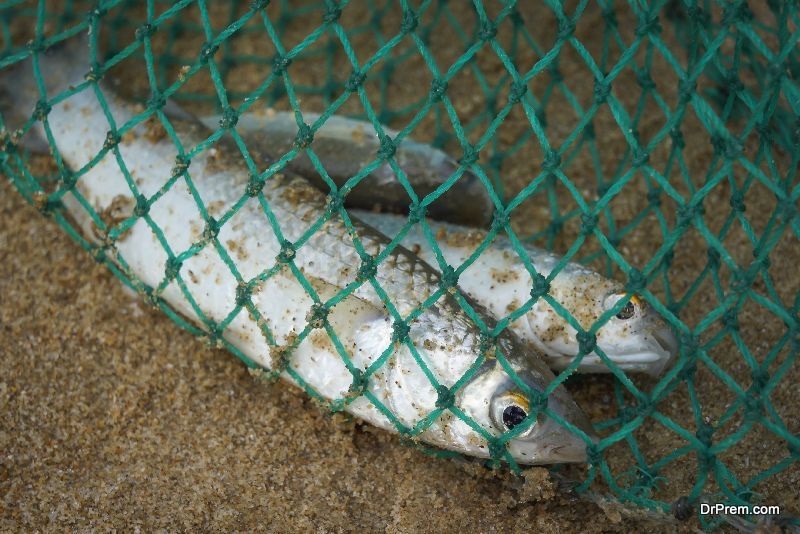 You could make a huge difference to smaller fish species by releasing the smaller fish, which, along with the bigger fish, get caught in the nets. Not only individuals but if fishermen also started doing this, instead of fish dying, the unwanted smaller species would have a chance of survival. New technology can now allow fishermen to let fish escape due to tiny pockets and keep the bigger fish. This means that fish population can increase and their health would also be better.
You could make a huge difference to smaller fish species by releasing the smaller fish, which, along with the bigger fish, get caught in the nets. Not only individuals but if fishermen also started doing this, instead of fish dying, the unwanted smaller species would have a chance of survival. New technology can now allow fishermen to let fish escape due to tiny pockets and keep the bigger fish. This means that fish population can increase and their health would also be better.
4. Stop overfishing
Governmental agencies and local wildlife conservationists should set down limits together regarding the size and possession of the fish caught by anglers. This would prevent fish from being overfished.
When you fish, you should fish only the number you are going to fish. Take minimum bait with you, which should also be local, as foreign bait can harm the fish. Live bait is the best bait, as plastic baits can be left on riverbeds.
5. Learn about sustainable fishing methods
 The following fishing methods do not, generally, cause harm to oceans, but they are better than other methods:
The following fishing methods do not, generally, cause harm to oceans, but they are better than other methods:
6. Hook and lining or pole catching
In this method, a fishing pole with just one line and many hooks is used. It’s a good method, as anglers can release fish they do not want from the hooks, as soon as they are caught.
7. Traps
Weirs and floating traps which guide fish into small boxes, do not harm the environment or the fish. Reef nets, which are used to fish salmon in Northwest, are shallow and near to the surface nets, into which the salmon swim into, and are then tipped straight into the holding tanks.
8. Harpooning
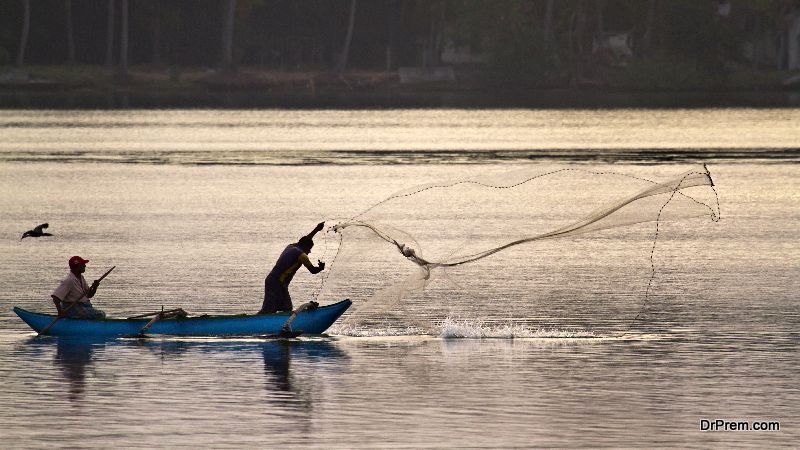 Harpooning is considered a sustainable way of fishing (big fishes such as swordfish), as there is no bycatch.
Harpooning is considered a sustainable way of fishing (big fishes such as swordfish), as there is no bycatch.
9. Trolling
In this method too, fishes are hooked individually. The lines are not handheld but trolling involves towing individual anchored lines from the moving boat. Unwanted fish or bycatch is minimum and can be released quickly.
Fishing methods you should avoid
1. Dredging
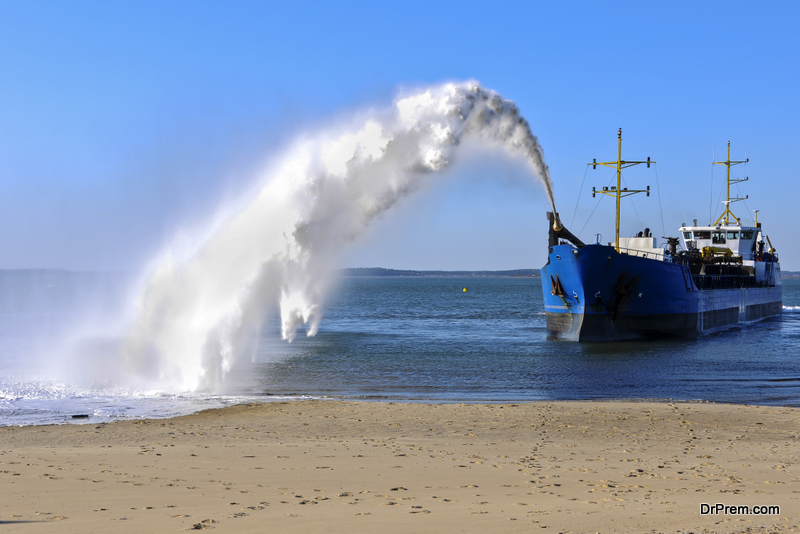 Dredging or dragging a mesh bag made of metal along the seafloor to catch fish like shellfish (oysters, scallops, and clams). This causes a lot of damage to the marine habitat, as along with fish, other types of sea life, such as sponges and fish are dragged in, and they do not survive the harsh dragging.
Dredging or dragging a mesh bag made of metal along the seafloor to catch fish like shellfish (oysters, scallops, and clams). This causes a lot of damage to the marine habitat, as along with fish, other types of sea life, such as sponges and fish are dragged in, and they do not survive the harsh dragging.
2. Gillnetting
In this, the openings in the net curtain which hang at different depths, are big just for the head and not the body of a fish, trapping the fish. The openings vary depending on the size of the fish. Gillnetting is not considered sustainable in some parts of the world as the nets can accidentally catch and kill marine animals such as sea turtles. However, in Alaska, gillnetting is a sustainable method to fish salmon, as there is a very low level of bycatch there.
Longlining, purse seining and trawling are other harmful methods of fishing.
Responsible fishing can help to conserve many fish species around the world. Angling is a great hobby, and with a little consideration, you can help fishes and other sea creatures survive.
Why sustainable fishing?
 We should fish sustainably not just because for the sake of the environment, but for our sake as well. It as apparent now that our lives our connected to that of our environment. In fact, the fishermen are leading a hard life. The number of fishes is declining, stocks have collapsed in nearly one-third of sea fisheries, and the rate of decline is accelerating.
We should fish sustainably not just because for the sake of the environment, but for our sake as well. It as apparent now that our lives our connected to that of our environment. In fact, the fishermen are leading a hard life. The number of fishes is declining, stocks have collapsed in nearly one-third of sea fisheries, and the rate of decline is accelerating.
Some fish, such as the blue fin tuna, have disappeared completely following intensive fishing. The fishermen say that the implementation of fishing curbs and other measures to keep Mediterranean and Atlantic waters alive are affecting their traditions and livelihoods.
According to EU figures, North Sea stocks of cod (the emblematic fish in the Atlantic) have dropped by three quarters in 30 years. At the same time bluefin tuna, once the pride of the Mediterranean has seen stocks drop by 80 percent. Furthermore, there is a warning by the journal Science that 29 percent of seafood species had collapsed which has created a bitter cycle of recrimination.
Crisis for Mediterranean bluefin tuna is just as dire. Mediterranean used to be the commonplace for fishermen to catch tuna weighing up to 1,100 pounds. Monster size tuna are now extremely rare. Furthermore, fishermen are sapping stocks by catching very small tuna before they can reproduce. They place tuna in cages to be fattened so they can be sold.
The result of these acts of fishermen might commercially extinct the species in 5 to 10 years years. Adra was once the most important fishing ports of Southern Spain, 20 years ago it had 15 large trawlers and 50 smaller boats but now there are 15 in all. The stocks of anchovies were fabulously rich in waters off Morocco.
EU’s efforts
Consumers in Europe scramble for seafood from remote corners of the world. The action recognized by EU has been hampered by the need to satisfy competing national interests.
In pre-Christmas rite, the scientists had advised a full ban on cod catching in the North Sea, but the EU nations settled on a 14 percent cut. It is estimated that over 40 percent of bluefin tuna catches in the Mediterranean are illegally landed to escape quota constraints.
Merely sustainable fishing isn’t enough, we should also promote sustainable seafood
One of the key effects of ‘Global Warming’ is happening to everyone’s favourite cuisine: Seafood.Not only are sea-levels and water-levels across the globe rising, rampant and unethical fishing is also affecting the habitat of seafood globally. Even though the demand of seafood keeps rising, humans are not being to support ocean safety.
Everyone’s desire to serve the healthiest fish is now a matter of grave concern. The choices made by the consumer are affecting the condition of the fishing community. The consumer’s demand for a certain kind of fish that pleases their palette is pushing the fishing industry to over-exploit its commercial fisheries.
But all this can be easily tackled. Even though more than 50 percent of the world’s fish has disappeared in the last 50 years, if the consumer decides to shift its focus on sustainable seafood, things will get better.
Now whenever one hears the word ‘sustainable’, they think it concerns the environment. In this particular case, that is not entirely true. ‘Sustainable’ here means to eat responsibly. It will not only help the environment but it will also keep you in the prime of your health.
Here is a quick buyer’s guide to the best of sustainable seafood currently in the market and why you should choose to go non-GMO!:
Five key reasons why you should eat sustainable seafood –
1. Eat delicious
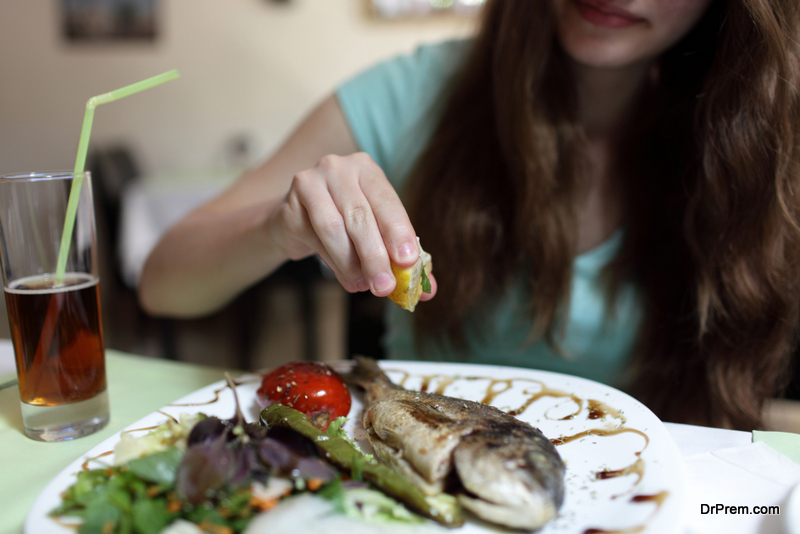 Just because you choose sustainable seafood does not mean you do not choose the healthiest fish that is offered. If keeping a healthy outlook in life can also help save the environment while keeping your taste buds tingling with the best that is out there is always a great way to feel good about yourself, isn’t it?
Just because you choose sustainable seafood does not mean you do not choose the healthiest fish that is offered. If keeping a healthy outlook in life can also help save the environment while keeping your taste buds tingling with the best that is out there is always a great way to feel good about yourself, isn’t it?
2. Support local businesses
Fishing as an industry supports a lot of households in the country for both food and a regular source of income, as most of the country is coastal. Buying locally-bought wild fish, not only helps the local economy prosper, it also helps other people in your society live a sustainable and happy life.
3. Sustainable seafood helps save endangered species
 To please you and the consumer en masse, the fishing industry has been over-exploited. Not only has there been rampant and unethical fishing to serve the healthiest fish, there has also been a disturbance of the ecological balance in the water sources near you. Scientists claim that close to 85 percent of the world’s commercial fishing belt has been over-exploited which has resulted in most of your favorite fish becoming endangered. This will not only increase the cost of your favourite food drastically, it also means you will soon run out of it. Choosing sustainable seafood will help reduce the pressure on fisheries world-wide and will allow the ecological balance to be restored.
To please you and the consumer en masse, the fishing industry has been over-exploited. Not only has there been rampant and unethical fishing to serve the healthiest fish, there has also been a disturbance of the ecological balance in the water sources near you. Scientists claim that close to 85 percent of the world’s commercial fishing belt has been over-exploited which has resulted in most of your favorite fish becoming endangered. This will not only increase the cost of your favourite food drastically, it also means you will soon run out of it. Choosing sustainable seafood will help reduce the pressure on fisheries world-wide and will allow the ecological balance to be restored.
4. Healthier you
Though you might have heard it from your doctor or from that special someone again and again, eating healthy will always ensure that you live longer. The healthiest fish has loads of protein and as you might have heard before, it is one of its best attributes, taste not counted. Sustainable seafood also contains lesser to no chemicals and a high count of vitamins, minerals and the Omega – 3 compounds.
5. It is very easy on the pocket
 One of the key focus areas of any buyer’s guide is to provide a list of products that are easy on the pocket. And that is the beauty of sustainable seafood. Because of its easy access, local source and not-so-high demand, it is fairly priced as compared to the other options in the market.
One of the key focus areas of any buyer’s guide is to provide a list of products that are easy on the pocket. And that is the beauty of sustainable seafood. Because of its easy access, local source and not-so-high demand, it is fairly priced as compared to the other options in the market.
Now let’s take a quick look at the places and things that can help you can find these sustainable seafood options –
Places where you can find sustainable seafood
1. Go to the Dock:
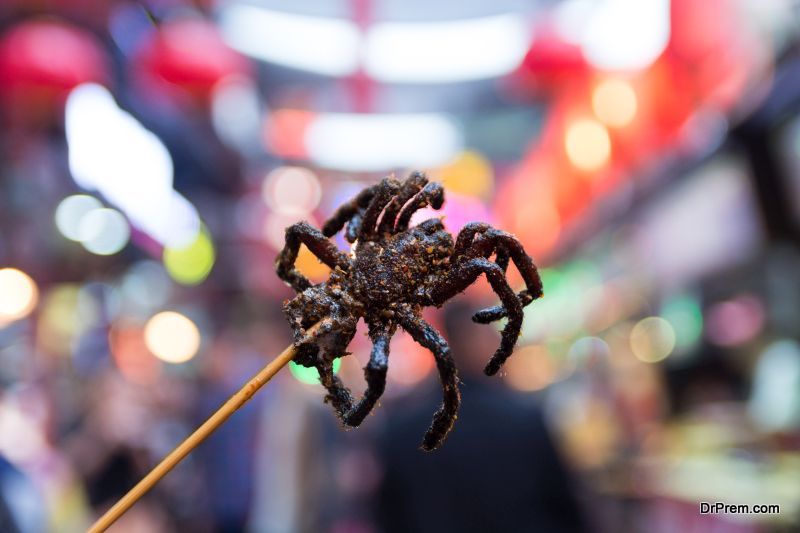 One of the main sources of the healthiest fish in the market is from the dock closest to you. Every dock has a fish market that runs in the wee hours of the morning. So if you are up for it, go for an early morning run or drive and you can head back home with your favorite food.
One of the main sources of the healthiest fish in the market is from the dock closest to you. Every dock has a fish market that runs in the wee hours of the morning. So if you are up for it, go for an early morning run or drive and you can head back home with your favorite food.
2. Use Apps:
Now-a-days, there are mobile applications that help identify best practices in the fishing industry and also help people source the best sustainable seafood in their drive to get more people to eat responsibly.
3. See the tags:
Every seafood item has a number of tags attached to it. To identify the best out there, look out for the following options: a. Marine Stewardship Council b. Aquaculture Stewardship Council c. Seafood Watch Partner d. Friend of the Sea e. SeaChoice.org.
Final Words
 One argument that often crops up is that most people believe that their purchases from the local supermarket ensure that they have sustainable seafood because the labels on them say so. Though this is a valid argument, reading the fine print on the label is always a great option. Details of exactly the products are sustainable is always a great option.
One argument that often crops up is that most people believe that their purchases from the local supermarket ensure that they have sustainable seafood because the labels on them say so. Though this is a valid argument, reading the fine print on the label is always a great option. Details of exactly the products are sustainable is always a great option.
One thing that needs to be mentioned here: Only buyer’s guide alone is not going to help save the environment. For that to happen, each one of us needs to do our bit to help save the environment. The best way to describe it is – Having a driving license is of no valuable use if you are not going to drive a car.
Also, never refrain from asking questions. Fear of ridicule often leads to people not asking pertinent questions that could have helped them save tons of money and making a lot of wrong choices. Even if you do not feel comfortable in asking people questions, there are numerous mobile applications for this purpose. Kindly refer to them as and when the need arises.
Learning to identify sustainable seafood is not as hard as it seems. Once you make the choice to eat responsibly, it impacts the health over a period of time. Not to mention the environment. Gandhi had said: “Become the change you want to see in the world.”


